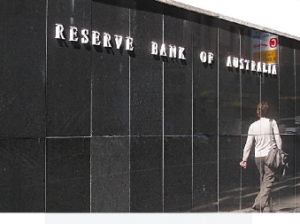Interest rate hikes will hurt workers to protect profits (part 1)
Anis Chowdhury

“The Reserve Bank of Australia has hiked its interest rate 4 times so far this year, for a combined total of 1.75 percentage points. And it has signalled more increases are ahead, as it joins other central banks around the world in rapidly increasing rates to slow spending power, job-creation, and hence inflation. In this commentary, Centre for Future Work Associate Dr Anis Chowdhury challenges the wisdom of this strategy. Since current inflation is related more to supply chain disruptions and other global pressures, higher interest rates will do more harm than good — and shift national income even further toward the owners of capital, instead of working Australians.
The Reserve Bank’s latest interest rate hike, the fourth in a series and with more to come, will certainly slow economic activity and raise unemployment. It will hurt families, especially of the working class, who played no role in the current bout of inflation.
Treasurer Jim Chalmers warned Parliament, “Families will now have to make more hard decisions about how to balance the household budget in the face of other pressures like higher grocery prices, and higher car prices and the cost of other essentials”.
This is bad news, especially since many will also lose their jobs as the economy slows.
But it didn’t have to be like this – had the RBA and other policy-makers cared to seriously consider what is driving inflation, and been less dogmatic about their inflation target and how to reach it. Many seem to have forgotten the Labor Government’s own successful experience of addressing inflation in the 1980s through social dialogue, reducing price pressures without causing unemployment to rise. Those lessons should be relearned today.
What is driving current price rises?
The primary source of current price pressure is not surging demand, soaring wages, or a household spending spree fuelled by pent-up demand and one-off pandemic financial supports. Indeed, as RBA Governor Philip Lowe has acknowledged, “The household saving rate remains higher than it was before the pandemic and many households have built up large financial buffers”.
Even the labour market tightening and skills shortages seen in some sectors are not the result of surging aggregate demand, but rather mostly due to the impacts of the pandemic on labour supply (including via restrictions on the inflow of migrant workers).
Instead, the primary driver of current inflation is supply bottlenecks and blockages of goods, caused by a perfect storm of global problems: the pandemic, the war in Ukraine, and climate change’s effect on agricultural supply (and hence prices of food).
Interest rate hikes cannot fix supply bottlenecks; instead, they will exacerbate supply problems, by discouraging investment in new capacity and infrastructure. Interest rate hikes will also impose collateral damages on government finance, in addition to causing job losses and economic hardship for struggling families.
The Treasurer’s warning to brace for bigger real wage cuts than previously flagged is no comfort for the ordinary workers who already saw their income share in GDP steadily decline during the past four decades – while the share of GDP going to capital owners in profits continued to rise, setting record highs during the pandemic.
A recent report from the Australia Institute found that rising prices in Australia are actually driving corporations’ profits to record highs amid a cost-of-living crisis for the rest of us. This has been enabled in large part by lack of competition. Big corporations in energy, transportation, supermarkets, and other sectors use their oligopolistic power to raise prices (and profits) far above what would be necessary simply to cover higher input costs.
A recent study published in the UNSW Law Journal documented widespread price gouging in Australia: “a notorious practice” involving “pricing high-demand essentials at levels significantly higher than what is commonly considered acceptable, reasonable or fair”. During recent crises, including the Black Summer bushfires and then the COVID pandemic, unethical businesses exploited public desperation for basic consumer goods and services, such as hygiene products, staple foods, and utility services, to raise their profit margins.
Why raise interest rates?
The RBA knows it cannot fix supply shortages. Yet still it raises the interest rate, calls it a “forward-looking” strategy, and claims it will stem inflationary expectations and higher wage demands. Basically, this is a tactic to scare workers: in essence, saying to workers they must not ask for compensating wage gains or for restoring their share of domestic income, lest the Bank inflict more pain through losing jobs and livelihoods.
Central bankers around the world sugar-coat this scare tactic by saying, “It’s short-term pain for long-term gain”. That’s easy for them to say, as no central banker ever lost his/her job for such actions, or have tasted this “short-term pain” (which can actually affect a worker and their family for decades via lost work and suppressed incomes).
This view also ignores the fact that labour’s bargaining power has significantly declined compared to previous inflationary episodes, due to the erosion of collective bargaining and other institutional supports for wages, new technology, out-sourcing and globalisation. All these factors have driven the steady declines in labour income share and real wages. They also mean that fears of a 1970s-style “wage-price spiral” are not credible.
Source: A.I. Centre for Future Work, 4 Aug 2022
https://www.futurework.org.au/interest_rate_hikes_will_hurt_workers_to_protect_profits



























